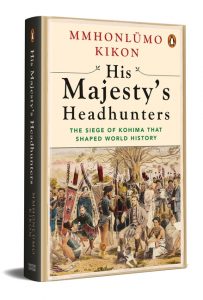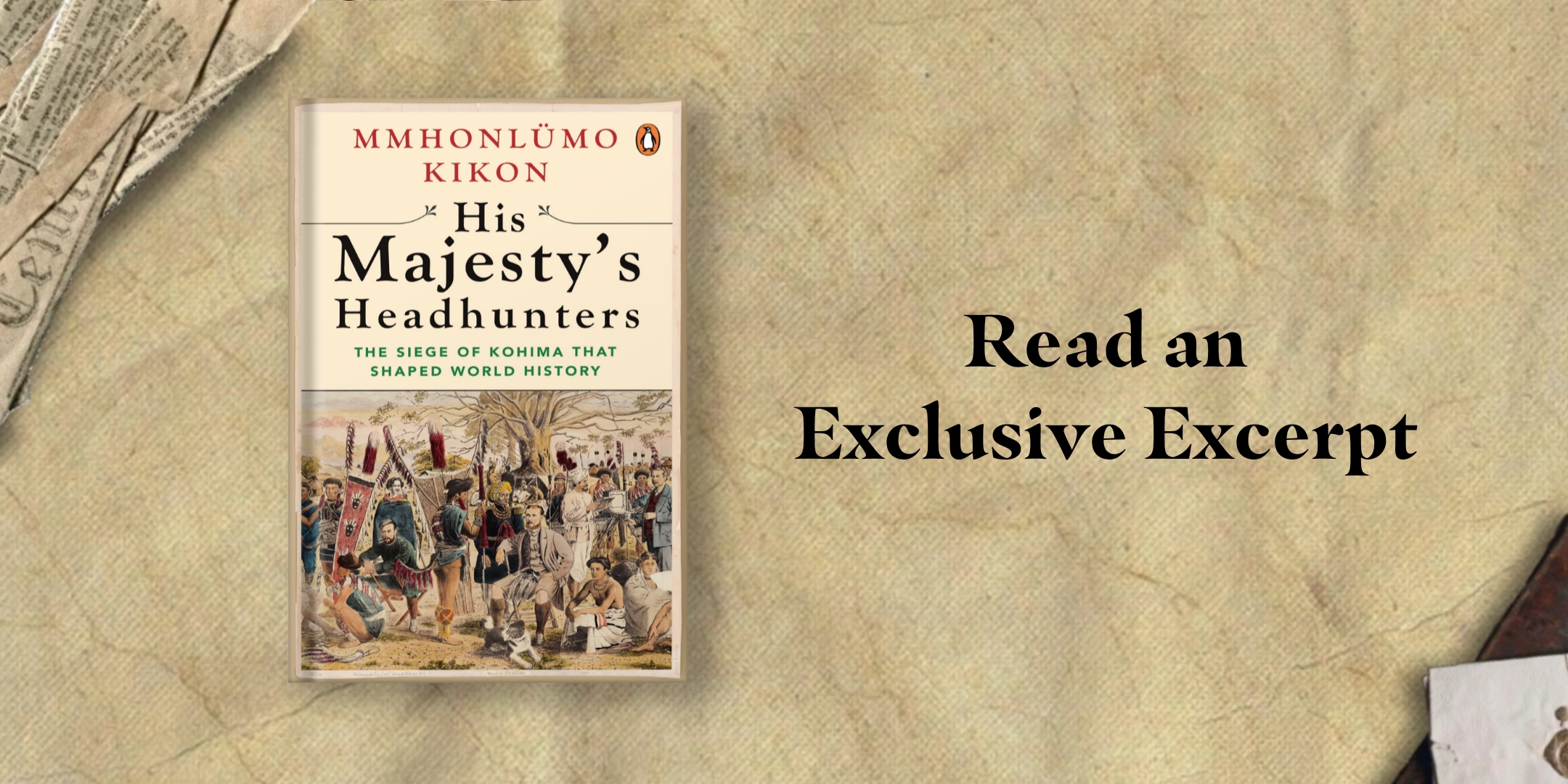Ever wondered about a battle so significant that it’s hailed as the ‘Stalingrad of the East’ and marked the end of the British Empire?
Step into the fascinating world of His Majesty’s Headhunters by Mmhonlümo Kikon, a gripping tale that unveils the hidden history of the siege of Kohima during World War II.
Read this exclusive excerpt to discover the ancient practice of headhunting, a crucial aspect of Naga life, and how it played a vital role in defining their identity and survival.

***
‘On the question being once put to the Nagas whether they
would like to become the subjects of the Company, they promptly
replied, “No: we could not then cut off the heads of men and
attain renown as warriors, bearing the honourable marks of
our valour on our bodies and faces.”’
—John Butler,
A Sketch of Assam, 1847, p. 160
Decapitating with the right blow of the Dao, or Headhunting, wasthe most significant art of warfare practised by the Nagas from the
ancient times right up until 1994.
To win a war was signified by the number of heads the Naga warrior brought home. Without these heads of the enemies, the war meant nothing. Headhunting was a source of motivation for all aspects of life in a Naga village. It gave them vigour and to the warrior a renewed energy, translating into the virility of crops and wealth thereof; the warrior with the most heads found stardom and a place of privilege in the eyes of his villagers.
At first glance, the headhunting practice of the Nagas has simply been described by its action—savagery of the uncivilized.
It happened at a time when there was no knowledge of guns. And till the British arrived, the Nagas were using the dao and the spear. In present times it is best to imagine a machete and a javelin used for chopping firewood or as a sport—all for non-violent purposes. But through stories passed down generations, the agency of oral tradition has brought to light the principles of warfare and the significance attached to the glory and honour of taking off the heads in a battle. It is so intrinsic to any discussion on warfare among the Nagas that it is now considered by many to be the keystone of the survival of the race living across the mountainous ranges of Patkai and Saramati. The noted Naga writer, Temsula Ao, reflecting on ‘Headhunting’ writes, ‘In the oral histories of different Naga tribes, the overriding emphasis on head-hunting is that it was a necessary strategy for the survival of each village community. Living in an insulated environment, each tribe began a process of indoctrination that this practice was not only necessary but also good for the people.’
It was more survival than preservation of a race as one village would fight the other through a stratagem of surprise and ambush.
The stratagem was always meticulously developed.
There were many reasons for villages to attack each other. Sometimes when they formed a coalition to attack a bigger village or foe, it was to raid the granary of the bigger village. It was not an act of vengeance. Normally over the years feuds between villages developed for various causes and vengeance was sought. And this vengeance became the driving force of the warriors. In the brandishing of decapitated heads, the thirst for vengeance was met. It was a celebration, a decisive victory over the enemy, a proclamation of the strength and the prowess of the warrior over the defeated.
Deep within the thirst for the heads was the belief that the soul or the human spirit resides in the head and the act of chopping the enemy’s head is like depriving the enemy of the soul too. At least that was the belief that gave them a sense of gratification. The practice of taking heads was not limited to the Nagas alone. However, the practice was considered a rite of passage from childhood to manhood, to be precise, and it was the key to getting community permission to get married. Among many Naga tribes, no man could get married if he had not taken a head in the battlefield. Such conditions were put in the olden times to ensure that the village ensured a steady flow of warriors and developed a custom so entrenched in the social system that it cemented the practice of headhunting in the community.
‘An eye for an eye’ was the philosophy40 when it came to responding to any heads taken from the village by the enemy. In an interesting report by A.J. Moffatt Mills, he writes, ‘It is totally incompatible with the Naga honour also to forego taking revenge, and it is incumbent on him to ransom or recover the skull of a relative murdered or captured in war, years may elapse but the murder of a relative is never forgotten and when a favourable opportunity offers probably, twice the number of victims are sacrificed. Retaliation again ensues and consequently there can never be a termination to these exterminating feuds.’ Till the killing was avenged by hunting the head of the enemy, the village could not restore their pride.41 Ferocious and violent as it was, it established the reputation of the warriors as proficient and successful in headhunting. They were not only the role models for all future warriors in the community, but they also became the hunted and therefore needed more warriors to be trained and skilled in the art of warfare for their own protection. The experienced and successful warrior then became the most vicious head-hunter in the process—and the taking of his head by an enemy would ensure immediate fame. Vengeance was sought for every head taken and it went on for years and years till the dead were avenged, and the entire village sometimes carried the trauma of not having done justice to the soul thus taken.
***
Get your copy of His Majesty’s Headhunters by Mmhonlümo Kikon wherever books are sold.














